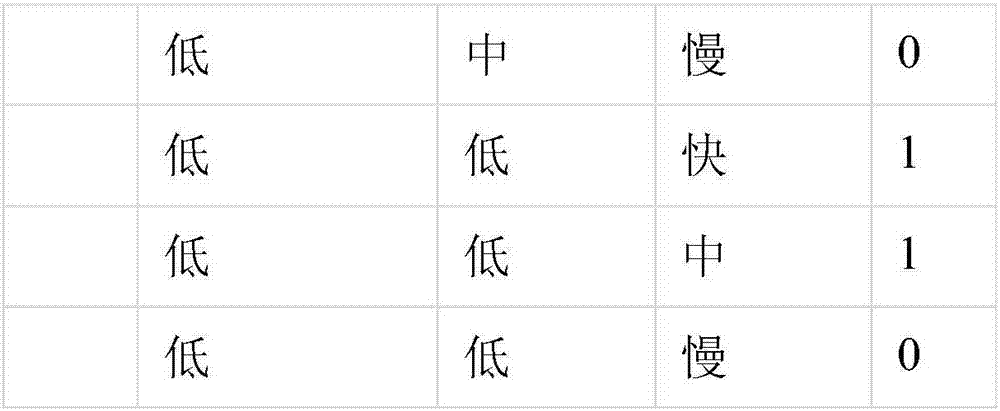Intelligent question-grouping method based on item response theory analyzing results
A technology of item response theory and analysis results, which is applied in the field of online learning group questions, can solve problems that cannot be targeted at different users, achieve the effect of reducing resistance and improving learning effect
- Summary
- Abstract
- Description
- Claims
- Application Information
AI Technical Summary
Benefits of technology
Problems solved by technology
Method used
Image
Examples
Embodiment 1
[0040] Embodiment 1, a method for diagnosing knowledge points in online learning, comprising the following steps:
[0041] Step 1. Evaluate the probability that the user has mastered the knowledge point. The calculation formula is P(θ)=1 / (1+e^(b-θ)), where θ represents the ability parameter for evaluating the user, and b represents each topic The degree of difficulty, e is a constant 2.71828;
[0042] Among them, for this knowledge point, b adopts the standard difficulty coefficient, which refers to the unified difficulty coefficient standard determined through quantitative and qualitative research methods for all platform users.
[0043] According to the accumulated practice data of a large number of users on the whole platform, combined with the correct rate of each question (the correct rate of each question adopts the average correct rate of all parts of the country (counties) to reduce the impact of differences in teaching levels in various regions of the country, and the...
Embodiment 2
[0058] The difference between embodiment 2 and embodiment 1 is that further, for each difficulty segment, samples are randomly selected, and the difficulty coefficient is finally determined through expert evaluation on the basis of statistical analysis results to ensure that the difficulty coefficient of the topic is objective and accurate . That is to say, experts first clarify the difficulty coefficient of the most difficult topic based on experience, and then test individual topics based on rich teaching experience.
Embodiment 3
[0059] Embodiment 3 differs from Embodiments 1 and 2 in that the expert assessment results and statistical analysis and assignment results are integrated to determine the final difficulty coefficient b=0.5*cumulative data analysis result+0.5*expert difficulty assignment for each topic.
[0060] After the diagnostic results of students' knowledge points are determined according to the above method, the system can carry out intelligent problem grouping.
[0061] Below in conjunction with specific implementation mode, the method for intelligent group questions is described as follows:
[0062] Step 1. Determine the knowledge points that need to be practiced. There are two methods, one is manual selection, and the other is automatic selection by the system. The teacher can determine the knowledge points that need to be practiced according to the number of people who have mastered each knowledge point in the class. Select knowledge points according to the priority of points, and se...
PUM
 Login to View More
Login to View More Abstract
Description
Claims
Application Information
 Login to View More
Login to View More - R&D
- Intellectual Property
- Life Sciences
- Materials
- Tech Scout
- Unparalleled Data Quality
- Higher Quality Content
- 60% Fewer Hallucinations
Browse by: Latest US Patents, China's latest patents, Technical Efficacy Thesaurus, Application Domain, Technology Topic, Popular Technical Reports.
© 2025 PatSnap. All rights reserved.Legal|Privacy policy|Modern Slavery Act Transparency Statement|Sitemap|About US| Contact US: help@patsnap.com



